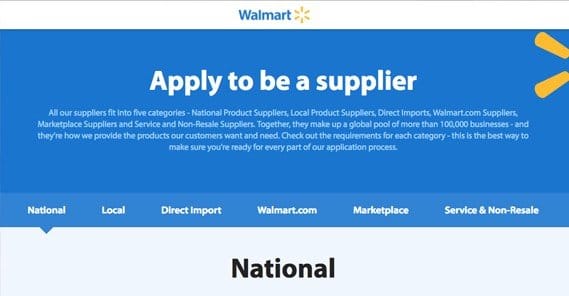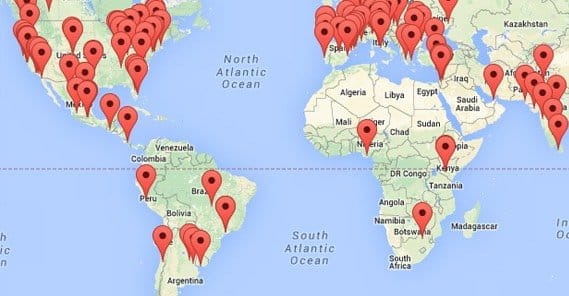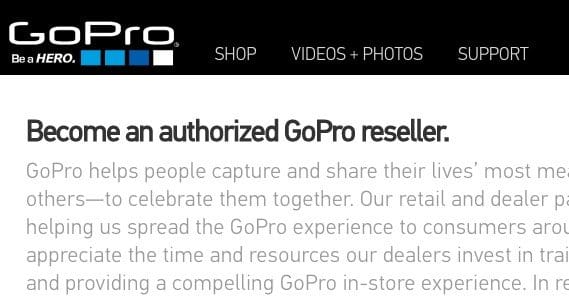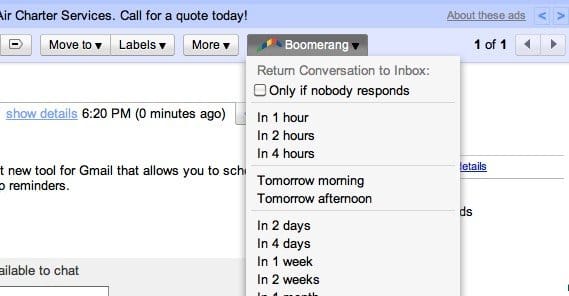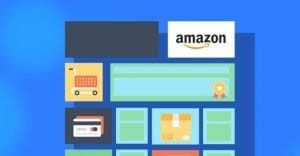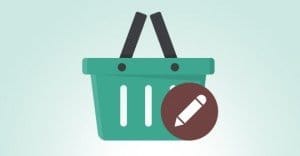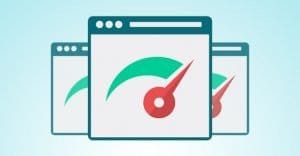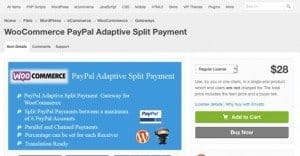15 Ways to Find Companies That Will Resell Your Product

One thing a surprisingly large number of entrepreneurs tend to ignore is the process of actually selling their products. It’s one thing to throw up a web shop or start up an Etsy, and sure, that’ll work just fine on a small scale. It’s great for one-person operations with low volumes. What happens, though, if you want to make it big? What if you want to turn your small operation into one that supplies to stores nationally?
A lot of entrepreneurs have this ambition, but they don’t think about the mechanics of the process. They focus their energies into developing the product, and figure distribution will take care of itself.
The reality of the situation is that a lot of entrepreneurs fail because they have no plans to bring their product to the market. They don’t have the initiative or the connections necessary to do it themselves, so they simply hope that some angel investor or a Shark will pick them up and do all the work for them. In reality, this almost never happens.
It’s generally a good idea to have a plan to cover the bases. If you’re an entrepreneur looking into the world of distribution, or you’re developing a product and have reached the point of needing those connections, it’s time to get working. I’ve compiled the methods you can use to reach sellers at various levels of distribution.
1. Contact Major Retailers
The first thing you can do is, assuming your product is something you would want to show up in a big box store like Wal-Mart, contact Wal-Mart directly. Now, I don’t mean just going down to your local store and talking to a manager, they won’t be able to help you. At best, they’ll give you the number for corporate and tell you to call them.
No, what you’ll need to do is talk to their procurement department. For Wal-Mart specifically, you can read up about it here on their website. Luckily, Wal-Mart has methods for both national suppliers and small, local suppliers who want their products in local stores as a test run. This is important, because it gets you some preliminary sales and profit figures you can use to attract larger orders from larger distributors.
2. Contact Smaller Local Retailers
You can do the same thing with small retailers that you do with big retailers, except you may have to do some more legwork. A local mom and pop chain with a half dozen locations might not have a website where you can reach a procurement department. Instead, you’ll want to talk to the store manager, who can refer you to either the store owner or to a dedicated procurement officer. The magic word is always going to be “procurement” in these situations. Procurement is the department responsible for obtaining items to stock shelves; by talking to them, you can become a supplier giving them those items.
Any time you’re talking to a procurement department, you need to make your pitch. There’s a lot that goes into this, but the biggest factor will be numbers. What kind of product volume can you produce? What size audience or interested preorders do you have? What sales have you been making? What is your pricing, what is your profit, and how much can the retailer make on the sale? If the numbers don’t add up to something profitable for them, they’ll use their shelf space for something with better margins.
3. Contact a Retail Distributor
National distributors are like middlemen for the equation. If you have a physical product, rather than you going out and making contracts with individual retailers, you talk to a distributor who already has made those contracts.
They hook you up to their network and get you in a bunch of stores you might not even have considered, but they also take their cut as well. This means distributors have the potential to give you a lot of profit, but you need wide enough margins to please both the retail stores and the distributors. Companies like National Retail Systems can greatly smooth the entire process, but you have to be able to handle the volume.
4. Search for Existing Resellers
There’s a concept called dropshipping, where people will buy wholesale products and resell them on their own, essentially inserting themselves as distributors in a process chain where there don’t need to be distributors. If your product exists and you fill large orders, you may be curious where those orders are going. I recommend running a search to find anyone selling your product. It’s possible they’re buying from an unauthorized distributor, and you can cut out the middleman. You make more profit selling directly, and they make more profit buying cheaper.
5. Let Them Come To You
Now, I don’t advocate this as your sole means of finding distributors, because it won’t work. However, in today’s web-connected world, you need to have a website to advertise your product. With that website, you should have a specific page dedicated to people who want to become a distributor or retailer for your product. That page should have basic information and contact information for those interested parties.
You won’t get a lot of interest if it’s your only method of distribution. However, once some retailers have picked you up, consumers can ask their local stores to carry your product, and the procurement department for that retailer can come looking. It won’t happen consistently, but it can happen, and there’s no reason not to have the page up and ready for them.
6. Find Web Resellers
There are probably a ton of people willing to sell your products for you, for a cut of the action. They don’t have to already be doing it, as number four indicates; they can be doing it with dozens of other products. Search the Amazon marketplace, eBay, and other hubs for resellers. Find people who are selling products similar to yours, but not with loyalty to any one brand. These are people you can reach out to see if they’re willing to set up a distribution agreement with you as well.
7. Research Individual Contacts
Regardless of what distributor or retailer you’re investigating, you’ll want to do more than just send a basic email to their procurement department and let it sit. You need to be proactive and reach out to the individuals responsible. Ideally, this means you’ll be looking up who exactly is in charge of procurement, and you’ll be trying to reach and network with them.
Generally, the first step is to send an email to the department. Wait a couple of days and then follow up with an email to the procurement director. Depending on how that works, you can continue to follow up with a phone call directly to their office, if you can find their contact information. Often times these people will reward proactive sellers, assuming your product is a good fit for their company.
As always, remember that you need to offer real value and real numbers to them. If you don’t have anything tangible to offer, they’re going to be skeptical and will probably simply tell you to come back once you have some experience.
8. Attend Industry Trade Shows and Events
Every industry has events, conventions, shows, and demonstrations. These events can range from incredibly minor closed insider events to something as big as the annual CES. The trick is to locate the shows in your industry and start registering for them. Set up a small table or booth, a demonstration that shows off your product, and have informational packets with ways that interested distributors and retailers can get in touch with you.
Shows are great for more than just hooking up with distributors. On top of that, they’re often great ways you can network with your peers. People you can collaborate with for future projects, people you can hire to work on your team, people who can invest in your business; they’re all there and they’re all paying attention.
9. Dig the Mines in LinkedIn
LinkedIn is probably your biggest single online resource. Everyone who is anyone in pretty much any industry is on LinkedIn, and that goes double for tech industries. There’s absolutely no reason to not have a page set up and active for networking with potential investors, retailers, or partners. LinkedIn is also a way you can take the name and company of a procurement manager and mine their contact information, or even just reach out to them directly. It’s a great way to get ahead of the game.
10. Browse National Distributor Lists
That link up there is a link to the member list page for the national association of wholesaler-distributors.
The member associations are all smaller associations of individual industries, such as the education market association, the healthcare distribution alliance, and the professional beauty association. Chances are, you can use this list or the contacts on the site to find an organization for your industry, and you can use that to get the connections you need to find a good distributor.
11. Contact Non-Competitor Industry Veterans
They say it’s never about what you know, and more about who you know. This is never more the case than in the upper echelons of business. Often times, even if the business itself is resistant to contact, you can communicate directly with the owner to get some advice. Ask them about where they started and how they got their first distributors. If they like you, and if they see promise in your business, they may just take you under their wing and hook you up with a few contacts. There’s nothing more valuable than an industry mentor, after all.
12. Find Competitor Suppliers
There’s no shame in competitive research. Identify your best, strongest competitors and go undercover asking retailers about how they get their supplies. This can get you in touch with suppliers, or with procurement people, either of which will get you a connection you can use to try to get your product on shelves as well. A little competition is a good thing, and many retailers will be more than happy to test out both products side by side to boost sales of both.
13. Follow Up on Leads
With business, as with life, you can’t just try once and stop. You have to put effort into anything you do. This means, primarily, that you’re going to want to follow up on all of your leads. If you use Gmail, something like Boomerang works great.
Remember, you really do need to have your information available, or else your leads aren’t really leads. Distributors want to know what sort of profits they can make, what costs they will incur stocking your product, how scalable your product is to demand, and even if you have more than one product. Tell them how much profit they can make in total and per unit, what sort of marketing you have in place, what interest levels and past sales you have, and anything else that can help close the deal.
14. Note Rejections and Return Later
Rejections are firm, right up until they aren’t. If you have never made a product before, a big company is unlikely to take interest in you and eat a loss due to your inexperience. However, once you’ve hooked up with smaller distributors and proven yourself to be valuable and profitable, they’ll be willing to take a second look. Don’t write off distributors because they rejected you once; make note of it and come back to them later. It doesn’t pay to hold grudges.
15. Consider the DIY Options
There’s one final question you have to ask yourself. Do you really need a distributor? These days, you can outsource a lot of the work to two companies; Amazon and UPS. As long as you can handle production and marketing, those two can handle fulfillment and shipping, and you’re well on your way to a successful business. Not all businesses need a distributor or a retail presence, so make sure you actually need it before you dive in to trying to get it.
 ContentPowered.com
ContentPowered.com
